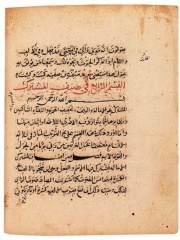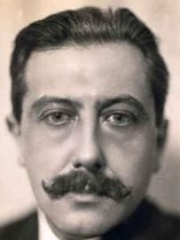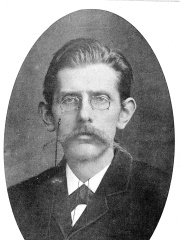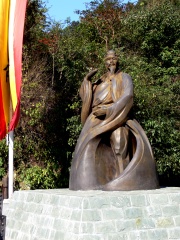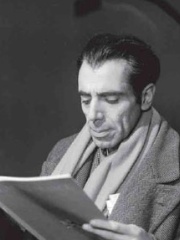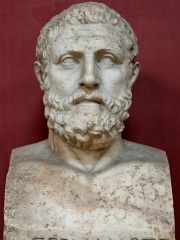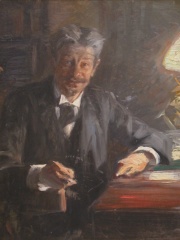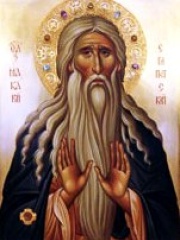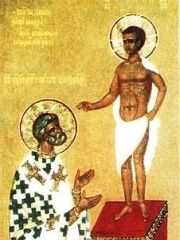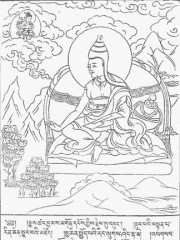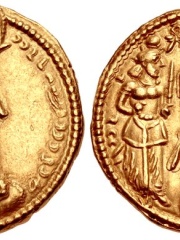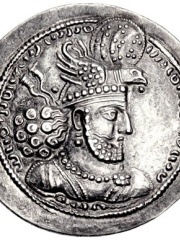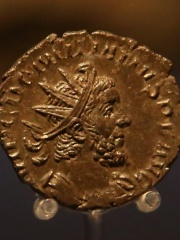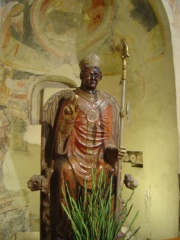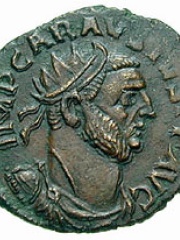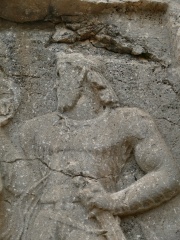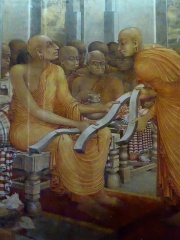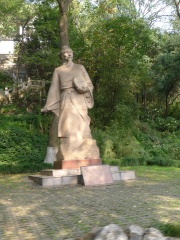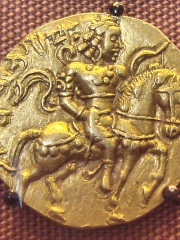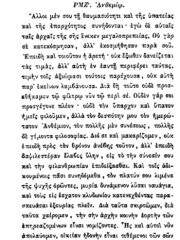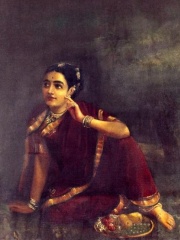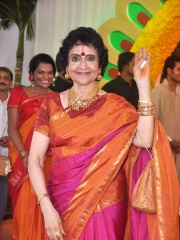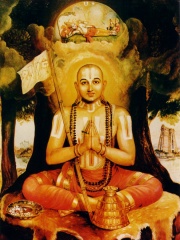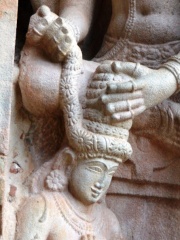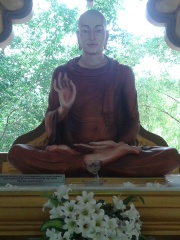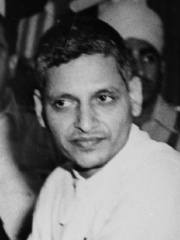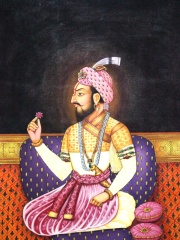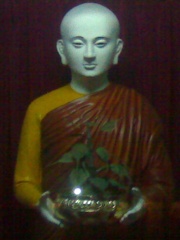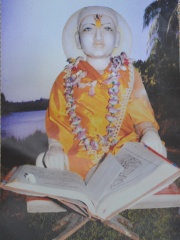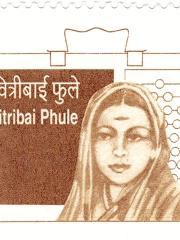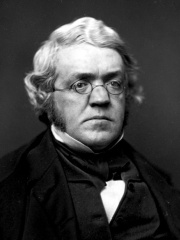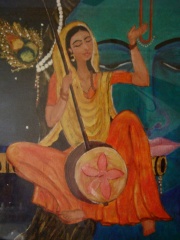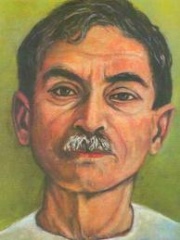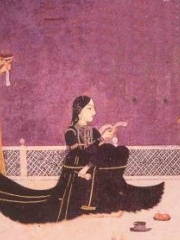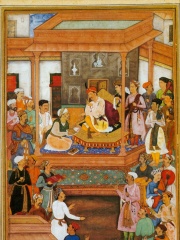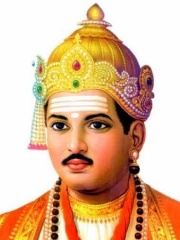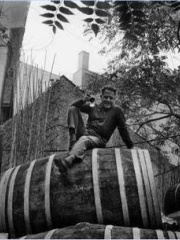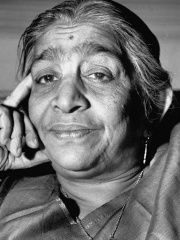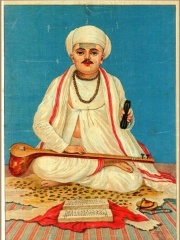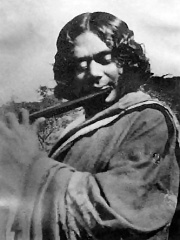WRITER
Vātsyāyana
300 - 500

 Vātsyāyana
Vātsyāyana
Vātsyāyana (Sanskrit : वात्स्यायन) was an ancient Indian philosopher, known for authoring the Kama Sutra. He lived in India during the second or third century CE, probably in Pataliputra (modern day Patna in Bihar). He is not to be confused with Pakṣilasvāmin Vātsyāyana, the author of Nyāya Sutra Bhāshya, the first preserved commentary on Gotama's Nyāya Sutras. His name is sometimes erroneously confused with Mallanaga, the seer of the Asuras, to whom the origin of erotic science is attributed. Read more on Wikipedia
His biography is available in 35 different languages on Wikipedia (up from 34 in 2024). Vātsyāyana is the 864th most popular writer (up from 948th in 2024), the 139th most popular biography from India (down from 112th in 2019) and the 16th most popular Indian Writer.
Vātsyāyana is most famous for his Kama Sutra, which is a collection of Sanskrit texts on human sexual behavior.
Memorability Metrics
Page views of Vātsyāyana by language
Among WRITERS
Among writers, Vātsyāyana ranks 864 out of 7,302. Before him are Gaius Lucilius, Al-Zamakhshari, Georges Bernanos, Yanka Kupala, Stephen Covey, and Jens Peter Jacobsen. After him are Sam Shepard, Zhang Sanfeng, Arthur Adamov, Periander, Douglas Adams, and Georg Brandes.
Most Popular Writers in Wikipedia
Go to all RankingsGaius Lucilius
180 BC - 102 BC
HPI: 69.05
Rank: 858
Al-Zamakhshari
1075 - 1144
HPI: 69.04
Rank: 859
Georges Bernanos
1888 - 1948
HPI: 69.04
Rank: 860
Yanka Kupala
1882 - 1942
HPI: 69.02
Rank: 861
Stephen Covey
1932 - 2012
HPI: 69.00
Rank: 862
Jens Peter Jacobsen
1847 - 1885
HPI: 69.00
Rank: 863
Vātsyāyana
300 - 500
HPI: 68.99
Rank: 864
Sam Shepard
1943 - 2017
HPI: 68.99
Rank: 865
Zhang Sanfeng
1200 - 1301
HPI: 68.99
Rank: 866
Arthur Adamov
1908 - 1970
HPI: 68.98
Rank: 867
Periander
700 BC - 583 BC
HPI: 68.98
Rank: 868
Douglas Adams
1952 - 2001
HPI: 68.98
Rank: 869
Georg Brandes
1842 - 1927
HPI: 68.98
Rank: 870
Contemporaries
Among people born in 300, Vātsyāyana ranks 19. Before him are Macarius of Egypt, Antipope Felix II, Pope Peter I of Alexandria, Asanga, Expeditus, and Narseh. After him are Hormizd II, Domitianus II, Zeno of Verona, Cyriacus, Carausius, and Bahram III. Among people deceased in 500, Vātsyāyana ranks 4. Before him are Buddhaghosa, Nonnus, and Zu Chongzhi. After him are Chandragupta II, Hierocles of Alexandria, Hesychius of Alexandria, Rutilius Claudius Namatianus, Aedesia, Anthemius, Charaton, and Asclepigenia.
Others Born in 300
Go to all RankingsMacarius of Egypt
RELIGIOUS FIGURE
300 - 391
HPI: 71.38
Rank: 13
Antipope Felix II
RELIGIOUS FIGURE
300 - 365
HPI: 70.65
Rank: 14
Pope Peter I of Alexandria
RELIGIOUS FIGURE
300 - 311
HPI: 70.60
Rank: 15
Asanga
PHILOSOPHER
300 - 301
HPI: 69.93
Rank: 16
Expeditus
RELIGIOUS FIGURE
300 - 303
HPI: 69.67
Rank: 17
Narseh
POLITICIAN
300 - 302
HPI: 69.47
Rank: 18
Vātsyāyana
WRITER
300 - 500
HPI: 68.99
Rank: 19
Hormizd II
POLITICIAN
300 - 309
HPI: 68.74
Rank: 20
Domitianus II
POLITICIAN
300 - 271
HPI: 68.51
Rank: 21
Zeno of Verona
RELIGIOUS FIGURE
300 - 371
HPI: 67.99
Rank: 22
Cyriacus
RELIGIOUS FIGURE
300 - 303
HPI: 67.69
Rank: 23
Carausius
POLITICIAN
300 - 293
HPI: 67.14
Rank: 24
Bahram III
POLITICIAN
300 - 293
HPI: 66.97
Rank: 25
Others Deceased in 500
Go to all RankingsBuddhaghosa
PHILOSOPHER
401 - 500
HPI: 76.08
Rank: 1
Nonnus
WRITER
500 - 500
HPI: 69.60
Rank: 2
Zu Chongzhi
MATHEMATICIAN
429 - 500
HPI: 69.57
Rank: 3
Vātsyāyana
WRITER
300 - 500
HPI: 68.99
Rank: 4
Chandragupta II
POLITICIAN
400 - 500
HPI: 66.56
Rank: 5
Hierocles of Alexandria
WRITER
410 - 500
HPI: 65.58
Rank: 6
Hesychius of Alexandria
LINGUIST
500 - 500
HPI: 63.97
Rank: 7
Rutilius Claudius Namatianus
POLITICIAN
420 - 500
HPI: 63.37
Rank: 8
Aedesia
PHILOSOPHER
500 - 500
HPI: 63.06
Rank: 9
Anthemius
POLITICIAN
400 - 500
HPI: 62.98
Rank: 10
Charaton
POLITICIAN
400 - 500
HPI: 62.96
Rank: 11
Asclepigenia
PHILOSOPHER
400 - 500
HPI: 62.40
Rank: 12
In India
Among people born in India, Vātsyāyana ranks 139 out of 1,861. Before him are Radha (null), Vyjayanthimala Bali (1936), Ramanuja (1017), Rajendra Chola I (1000), Cliff Richard (1940), and Mahinda (-285). After him are Nathuram Godse (1910), Sambhaji (1657), Sanghamitta (-281), Chandrakirti (600), Akshay Kumar (1967), and Varāhamihira (505).
Others born in India
Go to all RankingsRadha
RELIGIOUS FIGURE
HPI: 69.21
Rank: 133
Vyjayanthimala Bali
ACTOR
1936 - Present
HPI: 69.12
Rank: 134
Ramanuja
PHILOSOPHER
1017 - 1137
HPI: 69.10
Rank: 135
Rajendra Chola I
POLITICIAN
1000 - 1044
HPI: 69.10
Rank: 136
Cliff Richard
MUSICIAN
1940 - Present
HPI: 69.05
Rank: 137
Mahinda
RELIGIOUS FIGURE
285 BC - 205 BC
HPI: 69.02
Rank: 138
Vātsyāyana
WRITER
300 - 500
HPI: 68.99
Rank: 139
Nathuram Godse
EXTREMIST
1910 - 1949
HPI: 68.95
Rank: 140
Sambhaji
POLITICIAN
1657 - 1689
HPI: 68.91
Rank: 141
Sanghamitta
POLITICIAN
281 BC - 202 BC
HPI: 68.90
Rank: 142
Chandrakirti
PHILOSOPHER
600 - 650
HPI: 68.88
Rank: 143
Akshay Kumar
ACTOR
1967 - Present
HPI: 68.87
Rank: 144
Varāhamihira
ASTRONOMER
505 - 587
HPI: 68.85
Rank: 145
Among WRITERS In India
Among writers born in India, Vātsyāyana ranks 16. Before him are Tulsidas (1532), Savitribai Phule (1831), William Makepeace Thackeray (1811), Meera (1498), Premchand (1880), and Zeb-un-Nissa (1638). After him are Abu'l-Fazl ibn Mubarak (1551), Basava (1134), Lawrence Durrell (1912), Sarojini Naidu (1879), Tukaram (1608), and Kazi Nazrul Islam (1899).
Tulsidas
1532 - 1623
HPI: 73.16
Rank: 10
Savitribai Phule
1831 - 1897
HPI: 73.12
Rank: 11
William Makepeace Thackeray
1811 - 1863
HPI: 71.73
Rank: 12
Meera
1498 - 1546
HPI: 71.21
Rank: 13
Premchand
1880 - 1936
HPI: 70.83
Rank: 14
Zeb-un-Nissa
1638 - 1702
HPI: 69.33
Rank: 15
Vātsyāyana
300 - 500
HPI: 68.99
Rank: 16
Abu'l-Fazl ibn Mubarak
1551 - 1602
HPI: 68.58
Rank: 17
Basava
1134 - 1196
HPI: 68.27
Rank: 18
Lawrence Durrell
1912 - 1990
HPI: 68.26
Rank: 19
Sarojini Naidu
1879 - 1949
HPI: 67.28
Rank: 20
Tukaram
1608 - 1650
HPI: 67.09
Rank: 21
Kazi Nazrul Islam
1899 - 1976
HPI: 66.93
Rank: 22

